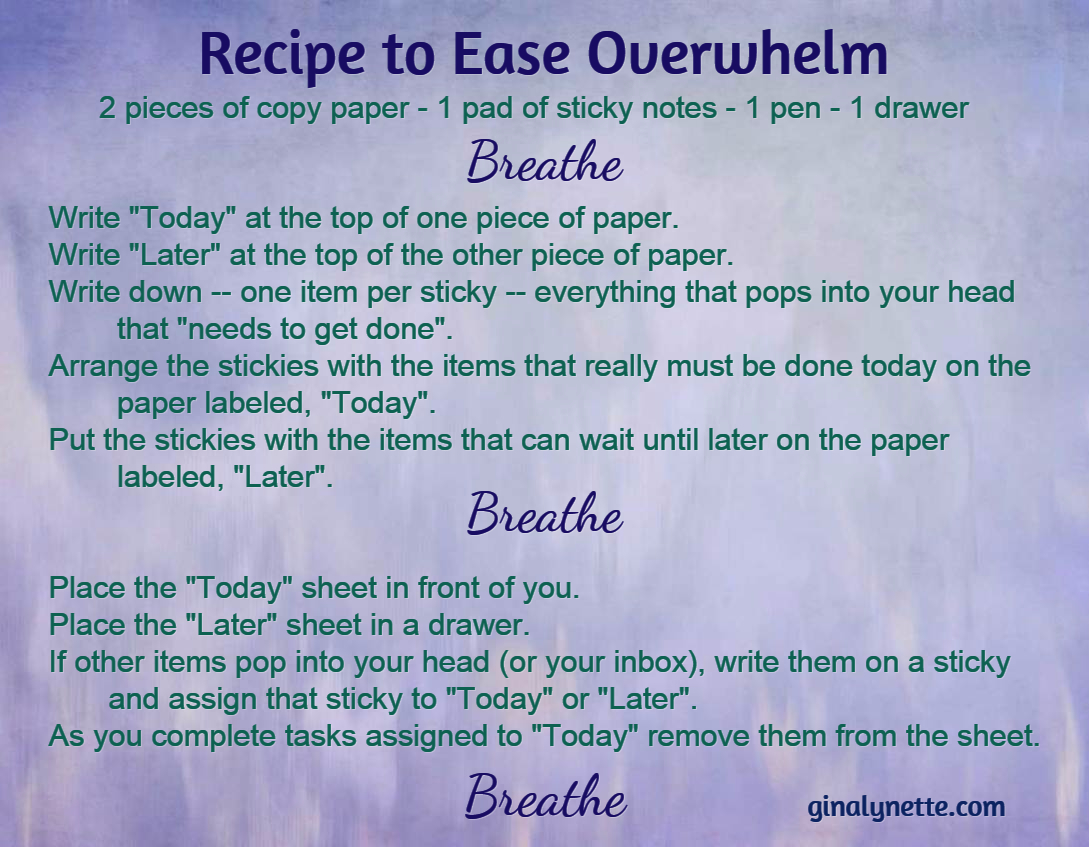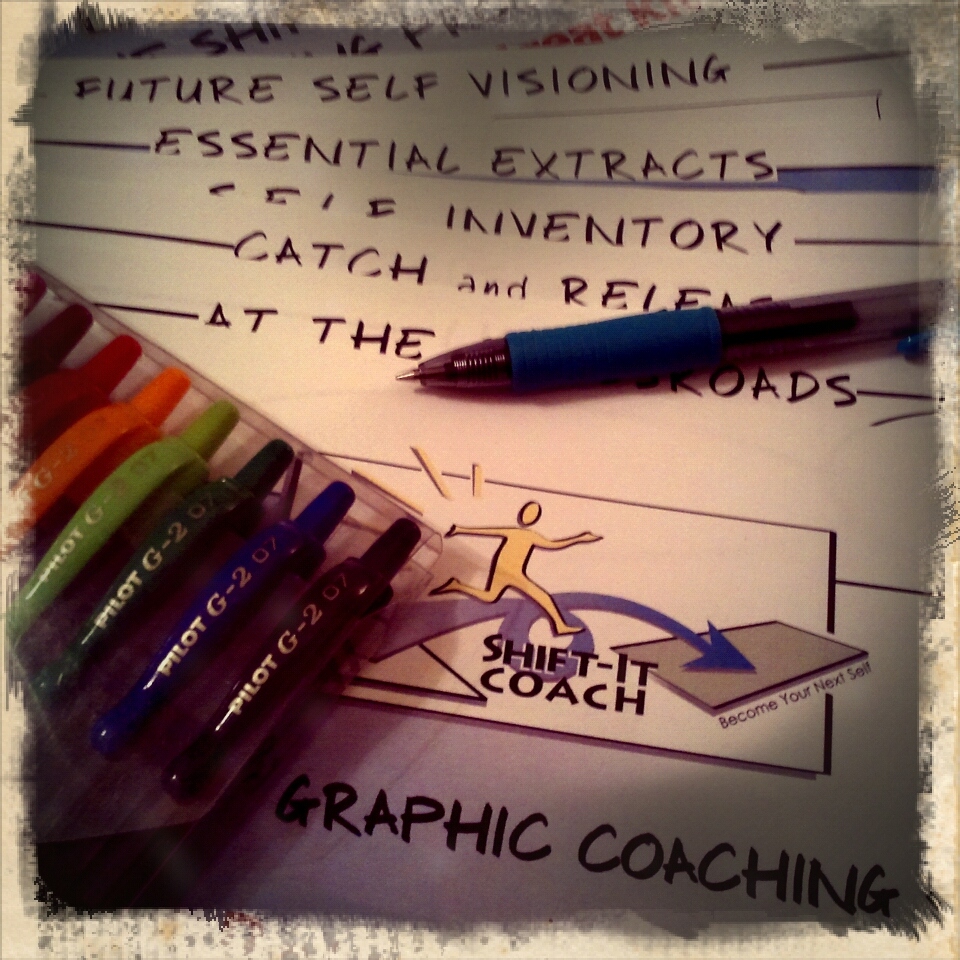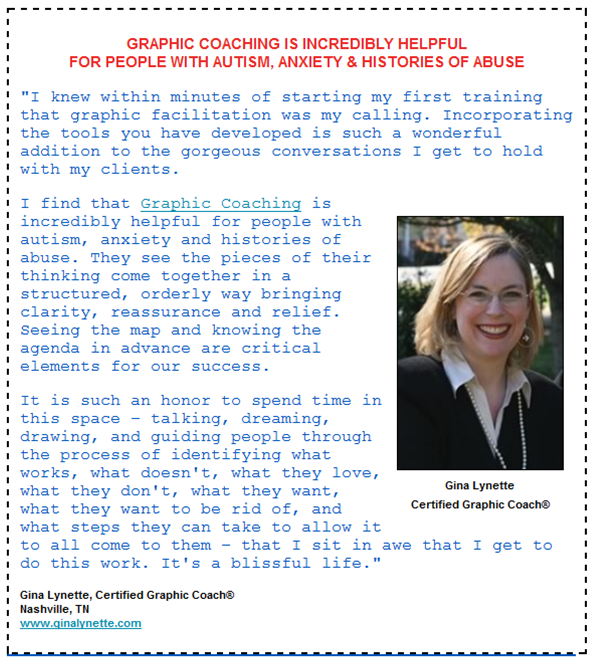
Sometimes, in spite of all of the self care practice you can muster, your day just goes off the rails.
Maybe it’s because a bunny chewed through the fuel line on your car.
Maybe it’s because you didn’t get enough sleep.
Maybe it’s because you took a few days off for vacation or because you’ve been ill.
Maybe it’s because you mixed up the dates on a deadline.
Maybe it’s because someone else mixed up their dates and suddenly hands you a deadline.
Maybe it’s because life can just get life-y and throw a whole lot at you all at once.
You look up and you’re in overwhelm. It’s a horrible feeling — having a whirling dervish of panic flying around in your head — and just makes a difficult day even harder.
My hubby was in overwhelm recently and told me so. I couldn’t remove anything from his proverbial plate, but I could help him walk through the process of collecting his thoughts and sorting through them so that some of the anxiety could be set aside. Having a clear head and remembering to breathe makes those pressing tasks much easier to accomplish.
When we’re worked up, we just don’t think clearly. We feel like we don’t have time to stop and make a plan. The reality is that we must pause and assess before we can get anything of value done.
So, when I encounter someone in overwhelm — or am feeling it creeping into my day — here’s what I do.
(1) I tell them to breathe.
It’s essential. You’re going to do it anyway. Give it your attention for a moment.
(2) Then I walk them through a dervish dump and sort.
Basically, you get it all down — everything that’s flying through your head — and then sort those items into what really must be done today and what can wait.
(3) Then come more reminders to breathe.
It’s amazing how our bodies respond to intentional, slow breathing.
At that point they are usually calm enough to take it from there. If not, we rinse and repeat.
Overwhelm happens to the best of us. It’s not a sign of weakness or failure. It’s a sign that you need a moment to pause and plan. So, next time you hit overwhelm, remember to stop, breathe, list, breathe, sort, and breathe.
—
The image is a colorful, painted background with the Recipe to Ease Overwhelm written on it.





















your thoughts